We may earn money or products from the companies mentioned in this post. This means if you click on the link and purchase the item, I will receive a small commission at no extra cost to you ... you're just helping re-supply our family's travel fund.
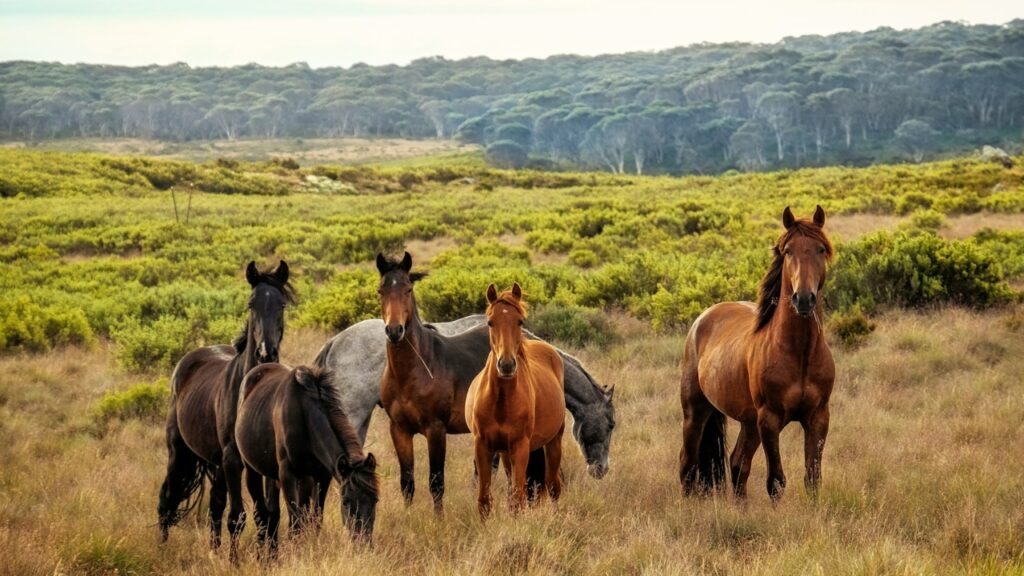
You’ve felt your pulse quicken watching horses gallop across open land. Out here, eight wild herds still roam free—each shaped by rugged terrain, weather extremes, and generations of survival. Ready to meet these mustangs, learn where to find them, and discover what makes each band unforgettable? From mountain ridges to desert valleys, each story proves that wild freedom still thrives in the American West.
1. Pryor Mountain Mustangs
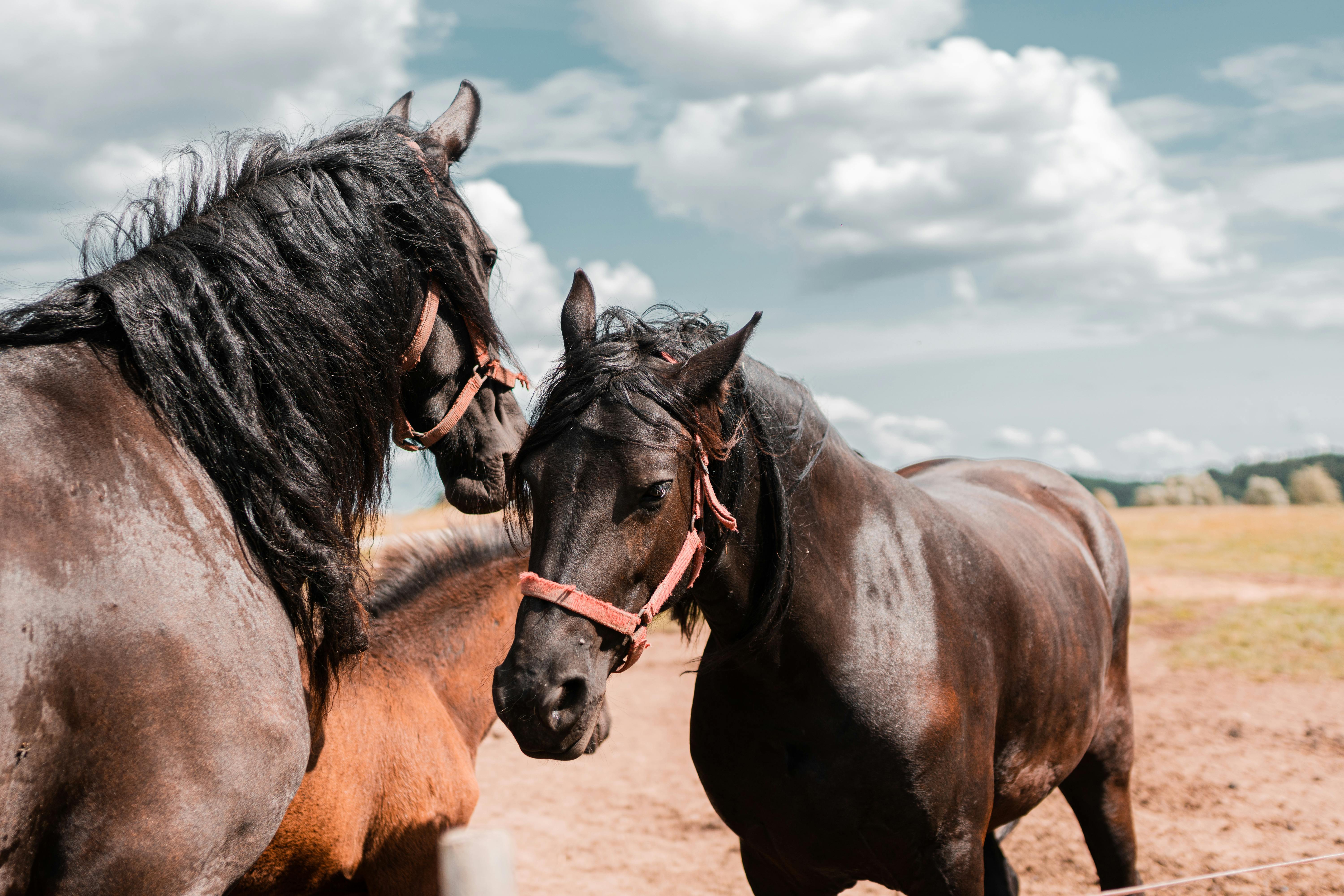
High between Montana and Wyoming, about 150 Pryor Mountain mustangs traverse 39,650 acres of rocky ridges, grassy meadows, and narrow canyons. You’ll spot dun-colored coats streaked with primitive stripes—zebra legs and dorsal bands that echo Colonial Spanish bloodlines. Family bands thread the ridgelines led by a wise stallion, his mane rippling in the wind as he scouts for forage in harsh winters and blazing summers, embodying mountain-hardiness at every step.
2. Kiger Mustangs
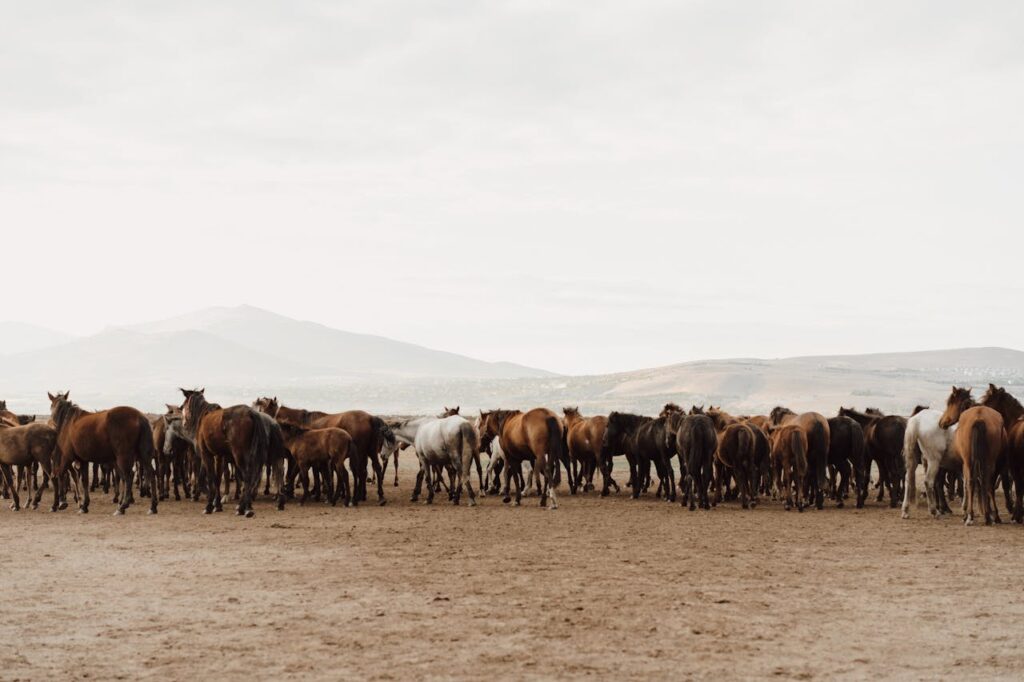
In southeastern Oregon’s Steens Mountain region, around 200 Kiger mustangs roam two BLM ranges totaling 65,000 acres of high-desert. DNA tests confirm their Spanish Barb heritage. At dawn and dusk, you’ll catch bay, dun, and grulla coats rippling across sagebrush flats. They drink at hidden springs, ears swiveling like satellite dishes for unseen predators. Agile and wary, they slip into heat mirages under vast skies, a living link to the Old West.
3. Warm Springs Herd
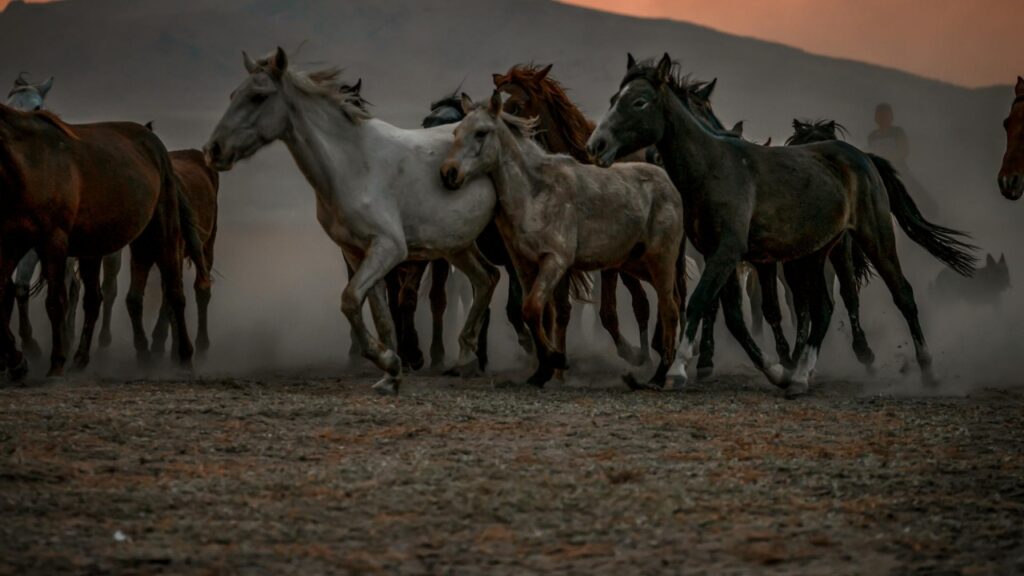
Central Oregon’s Warm Springs Herd Management Area spans 600,000 acres of juniper-sage steppe, volcanic soil, and pine forest. Here, up to 170 wild horses—and a sprinkling of burros—graze on sparse grasses and seasonal forbs. Bachelor bands trail family groups along creeks and springs. Thanks to fertility control, numbers stay balanced, letting natural behaviors thrive. You’ll witness stallion displays, mare grooming rituals, and foal bonds in a landscape that feels untamed yet carefully stewarded.
4. Sand Wash Basin Mustangs
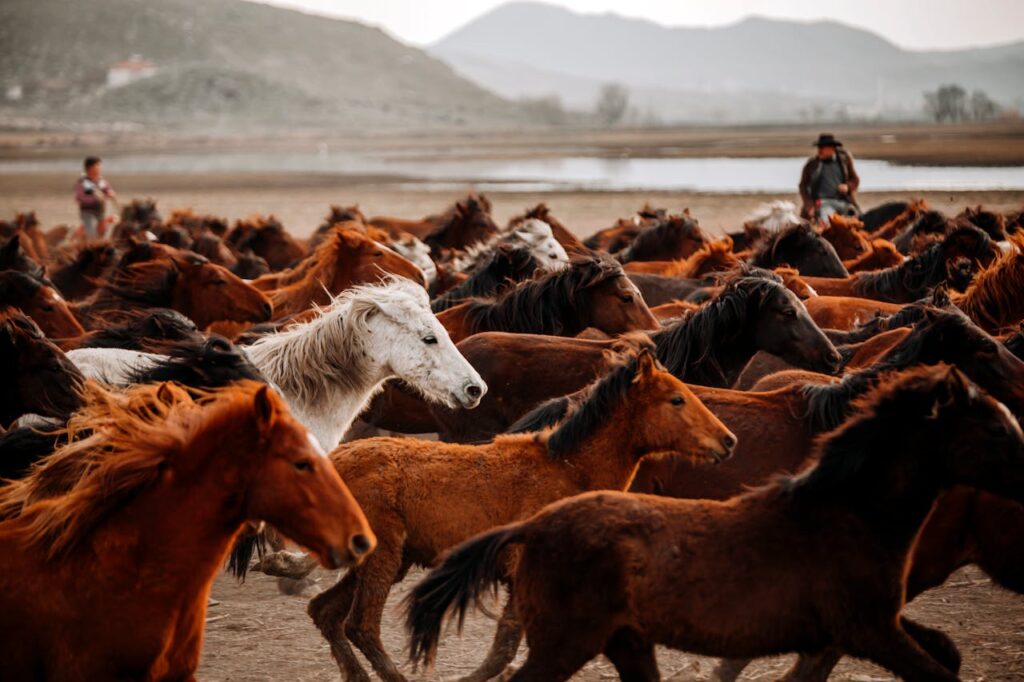
Northwest Colorado’s Sand Wash Basin covers 155,000 acres of desert basin, sandstone mesas, and riparian willow draws. Roughly 400 horses of every hue—grulla, sorrel, pinto—gather at dawn around watering holes. Stallion disputes spark dramatic chases across open flats, hooves kicking up dust like smoke. You’ll laugh at foals darting through tumbleweeds and catch herd movements that unfold like a live Western epic under big-sky vistas.
5. Salt River Horses
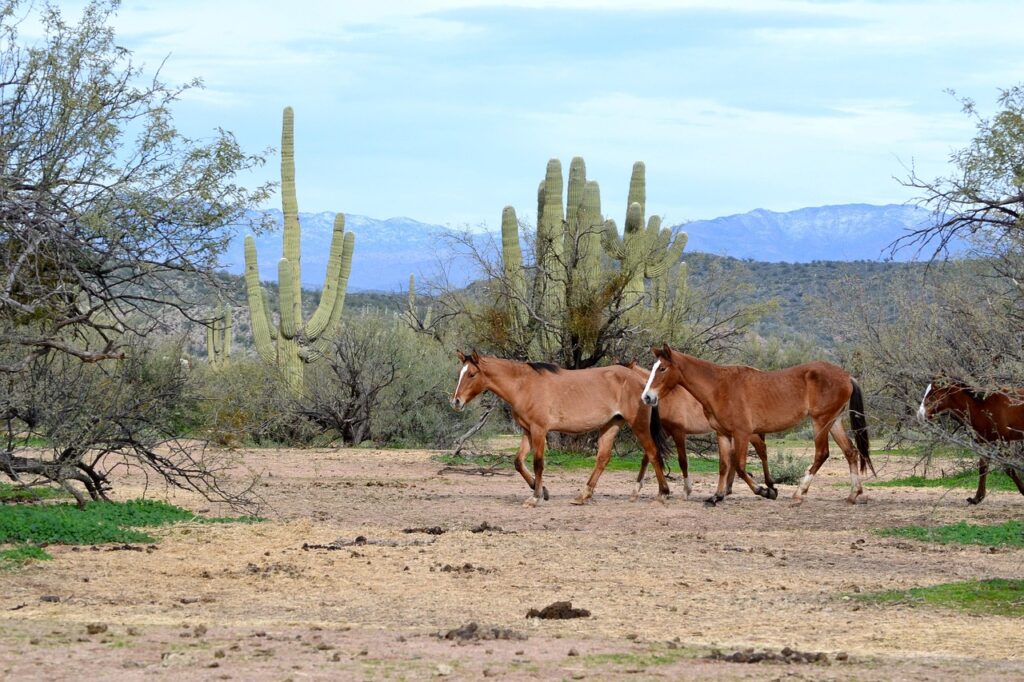
In Arizona’s Tonto National Forest, about 250 Salt River horses roam the lower Salt River corridor, from Coon Bluff to Granite Reef. These unbranded descendants of early settlers’ mounts wade through shallow channels at sunrise and seek refuge in cottonwood groves by noonday heat. Monsoon storms drench the banks, but by dusk they graze riverbanks again. You’ll feel their pulse in every hoofbeat against desert scrub and tumbleweed.
6. Virgin Valley Mustangs
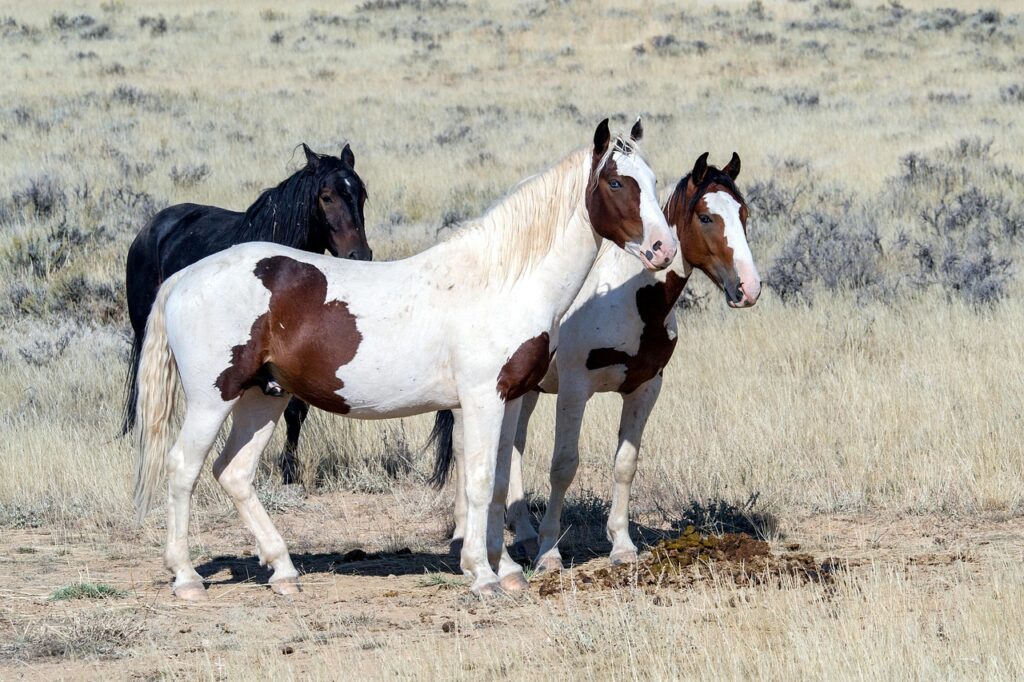
Straddling the Nevada–Oregon border, around 200 Virgin Valley mustangs range over 130,000 acres of juniper-studded hills and sagebrush flats. You’ll spot rare color phases—smoky black, flaxen palomino, cherry roan—picked out against rocky slopes. Their tough hooves negotiate talus and sand with ease. Managed to a strict Appropriate Management Level, these herds balance freedom with stewardship, thriving in a landscape pocked by ancient lava flows and wind-sculpted dunes.
7. Devil’s Garden Mustangs
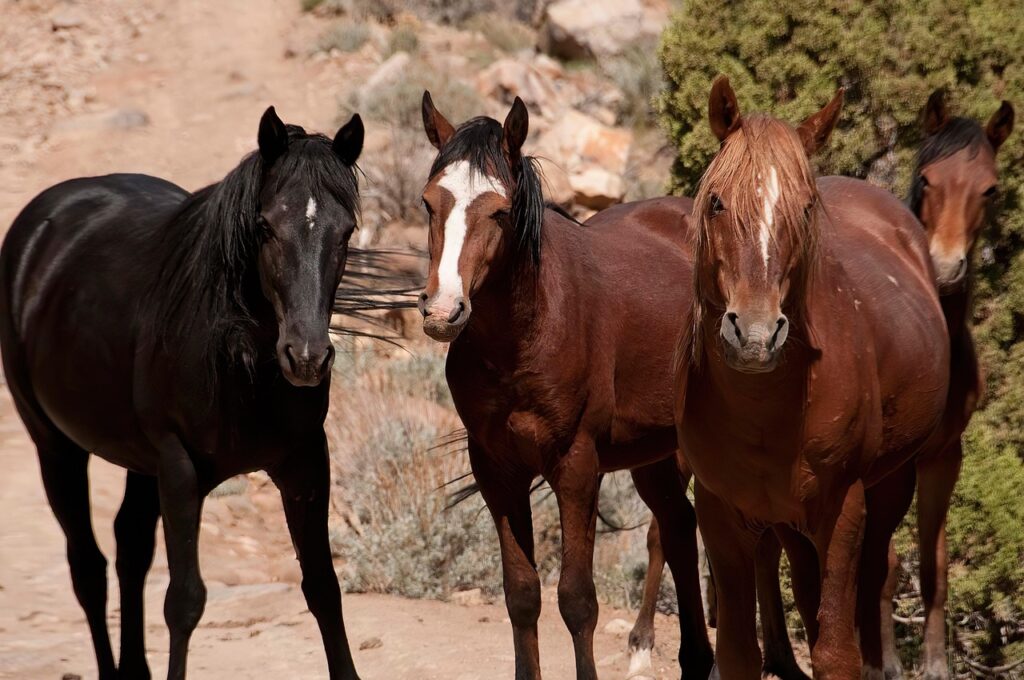
In northeastern California’s Modoc County, the Devil’s Garden Mustang HMA covers 38,000 acres of volcanic tablelands and juniper groves. Sixty to eighty horses scrape sparse grasses and bitterbrush from hardened lava rock. At dawn, you’ll watch family bands outlined against ash-gray fields, their dun and grulla coats blending into the terrain. Each dusty hoofprint tells a story of survival on soil that crackles under summer heat and freezes solid in winter.
8. Blue Mountain Mustangs
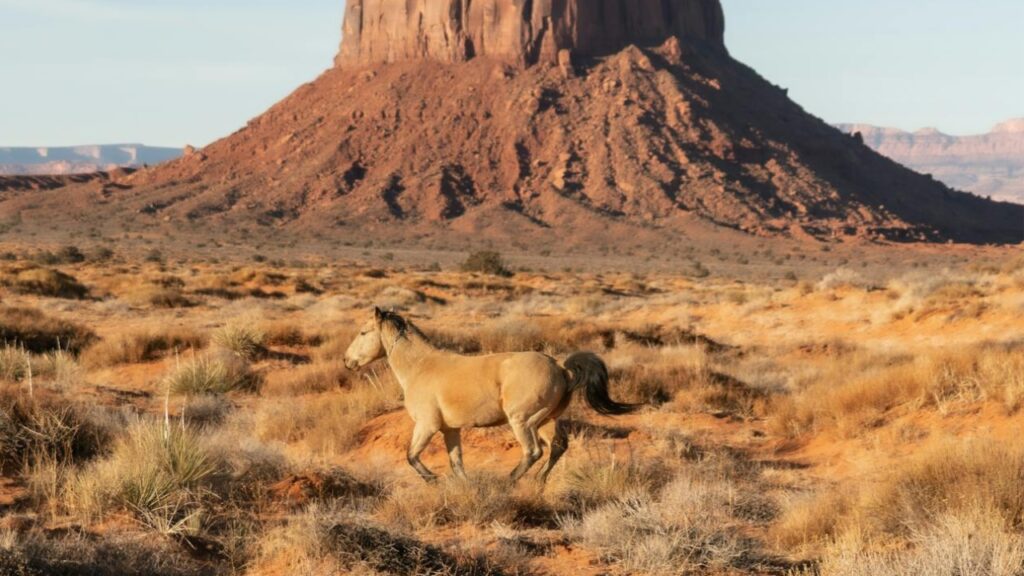
Eastern Oregon’s Blue Mountain HMA spans 50,000 acres of pine-grass savanna, rimrock, and seasonal draws. About 75 horses form stable bands led by dominant stallions with bachelor cohorts in tow. Their coats thicken to double the weight for insulation, turning them into rolling bundles of fur against snow-dusted pines. You’ll see them graze beneath frost-kissed needles, breathe in crisp air, and witness a living link to high-elevation endurance.
Leave a Reply